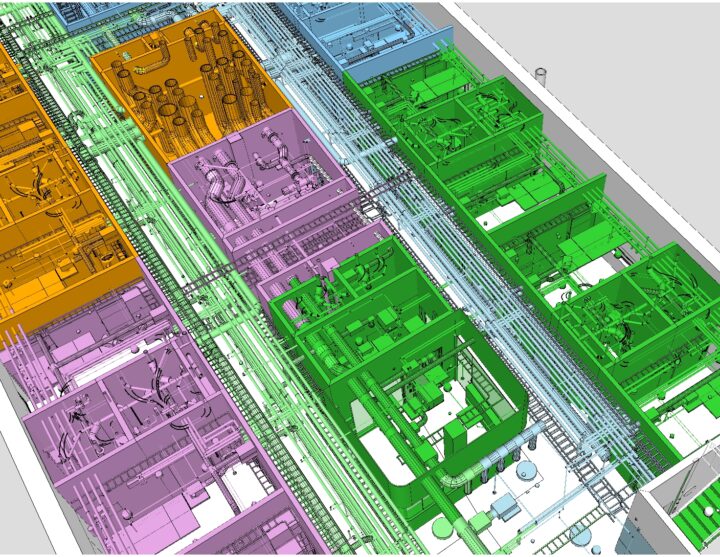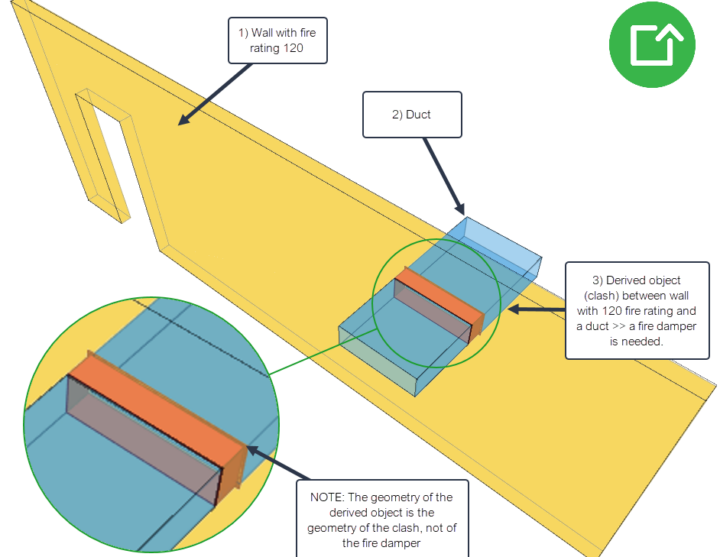3 ways to improve your BIM workflows
03.07.2023
3 ways to improve your BIM workflows
Improving your BIM workflows starts with transforming your raw BIM data into consistent and rich information.
Although raw BIM data is not necessarily ineffective on its own, it’s often not as useful or efficient as it could be when properly organized and enriched. That’s because it lacks consistency, which can lead to confusion, misunderstandings, and errors, especially when multiple stakeholders are involved in a project.
We know that raw BIM data may be also difficult to interpret, especially for those who aren’t specialized in dealing with it. When raw BIM data is consistent and enriched it enhances its accessibility to a wider audience, including project managers, designers, engineers, contractors, and clients.
Building projects are inherently complex, involving multiple disciplines, phases, and stakeholders. Using raw BIM data adds to this complexity because it’s often unstructured and not readily interpretable. This can lead to poor decisions making because the data’s potentially inaccurate or incomplete.
As BIM involves using various software applications, raw BIM data may not be interoperable across different software platforms, which can also hinder collaboration and efficiency.
Without organizing and enriching raw BIM data, it can be difficult to effectively plan and execute construction processes, which can lead to challenges in scheduling, cost estimation, supply chain management, and risk mitigation.
While raw BIM data is a valuable resource, it’s much more effective when it’s processed into a consistent, rich format that can be easily used by all stakeholders involved in a building project.
Benefits of transforming raw BIM data to improve workflows
The transformation of raw BIM data into more structured and useful information can lead to many benefits, particularly in improving BIM workflows. Here are some key benefits:
- Enhanced Collaboration: When raw BIM data is processed and made consistent, it enhances collaboration among the various project stakeholders. Everyone from architects to engineers to contractors can access and understand the same data, facilitating efficient teamwork.
- Improved Decision Making: Accurate, organized BIM data can provide a comprehensive view of a project, making it easier for project managers and team members to make informed decisions that can lead to better project outcomes.
- Increased Efficiency: Standardizing BIM data helps to eliminate repetitive tasks, reduce errors, and improve the speed and accuracy of information flow. This can streamline BIM workflows, save time, and increase productivity.
- Improved Project Scheduling: With structured BIM data, project timelines can be managed more effectively. This helps in visualizing the project timeline, identifying potential delays, and taking proactive measures to stay on schedule.
- Better Cost Management: Accurate BIM data can lead to more precise cost estimation and effective budget control. It can highlight areas where costs can be minimized without compromising quality.
- Risk Mitigation: With detailed and accurate BIM data, potential risks can be identified early in the project lifecycle. This allows for early intervention and can help prevent costly fixes down the road.
- Enhanced Interoperability: Standardized BIM data can be exchanged easily among different software applications used in a project. This increases interoperability and facilitates a seamless flow of information.
- Effective Facility Management: In the post-construction phase, enriched BIM data can aid in more efficient facility management, operations, and maintenance.
- Sustainability and Compliance: Processed BIM data allows for improved energy modeling and adherence to sustainability goals. It also helps in ensuring compliance with building codes and regulations.
Transforming raw BIM data into consistent and rich information can significantly enhance BIM workflows, leading to better collaboration, improved decision making, and more successful project outcomes.
3 ways to take your BIM workflows to new heights of efficiency and productivity
As we’ve outlined above, transforming your raw BIM data into consistent and rich information will ultimately improve your BIM workflows, making you and your team more efficient and productive.
At Simplebim, we’re proud to play our part in helping our customers to transform their BIM data workflows. In our latest Simplebim 10 update, we’ve rolled out three new tools that help to do just that.
Expression Editor
You can now derive new objects and data with Simplebim’s Expression Editor – the easier and more robust formula composition tool. The Expression Editor can be used for editing formulas wherever formulas are used in the Simplebim UI. For example, in the Calculate Properties tools and the Add New Group dialog (when creating a rule-based group).
Configuration for Tools
Simplebim users can automate the processing of their models by running the tools from a template or script. All they need to do is copy configurations for tools from the UI to templates and scripts to make automation so much smoother.
Automation with Templates
Templates include a lot of different rules that can be applied to the models. In our latest release, we’ve made it easier than ever to integrate links to documents for each rule. Each rule now has a dedicated section in the Template files. Each section has a subtitle, which is also a link to the documentation.
Want to know more about how to transform your BIM workflows? We invite you to get started today by downloading a free trial of Simplebim and experiencing the power of these enhancements firsthand.


